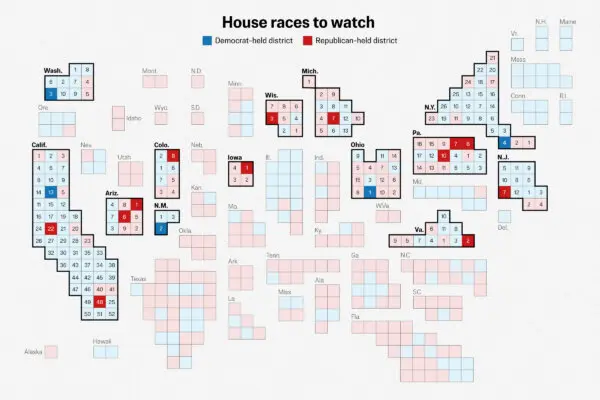Democrats created a rising tide of blue victories on Nov. 7 that swept over two state legislatures, one governor’s mansion, a state supreme court, and a pair of ballot initiatives.
The results of the night, though not entirely one-sided, reveal that the Democratic Party has gained momentum by leveraging abortion and railing against what they describe as right-wing extremism.










